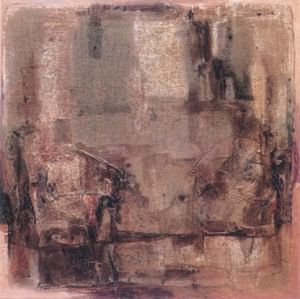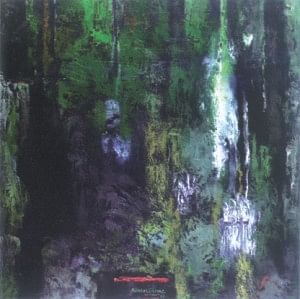| Exhibition
Parade of Passionate Paintings
Fayza Haq
Bengal Gallery's “Rooted Creativity”-5 is as dazzling a demonstration of our painters as the previous ones. Vibrant with buoyant colours, brave lines, and forms full of passion and imagination – they speak of the talent and preservation of our artists in their sixties. Bold and brave in their manner of presenting the hues on the canvas or paper, they capture and hold your imagination as few exhibits do. For all the hard work that went into the exhibition, the ever-smiling Jalil Bhai, and those who helped him, are to be thanked. Eventhough one had to miss the mouth watering afternoon repast, one enjoyed the brief sojourn to the favourite Dhanmondi haunt. The placing, lighting and arranging on the whole remains superb, as always. It is said that there is no proper assessment of the paintings. Reviewers go in only to appreciate: There is no proper criticism. But who can help this? Seeing the paintings is like meeting old friends whom one has known for decades.
 |
 |
Rezaul Karim, Tsunami-4, acrylic on canvas, 81x81cm, 2010. |
Biren Shome, Music of the Wall, oil on canvas, 91x91 cm, 2010. |
Hamiduzzaman Khan, by now, is recognised as not only one of the foremost sculptors in the country but also a master painter. The seascapes with their predominant jet-blacks, with additions of beige, gray and white remain superb. They capture the mood and violence of the water masses, clouds and bits of land in between with masterful sweeps and swirls. The forms of the struggling boats and fishermen are included with swift and deft strokes. Gliding and sliding lines bring in the repose of the nights and the majesty of the enveloping nature – as found in the Sundarbans – that has fascinated the artist. Everything appears cool and mystical in the vast expanses of black – with the pulsating touch of light brown and at times, darker hues.
The dominant and dark shades, highlights the beauty of nature. Although he has used dark shades, his vision is not a melancholic one. “ I've been to the Sunderbans 16 times and each visit gives me renewed pleasure. The world appears different. The charm and romance are indescribable in words alone. Unless one travels by boat one cannot experience the complete beauty of Bangladesh. “Of late, I've taken to painting in a serious way,” says Hamiduzzaman Khan with a master from Barodah, India, he has numerous credits to his name including an “Ekushey Padak”
 |
Iftikhar Uddin Ahmed, Success mixed media on canvas 102x46cm, 2010. |
Ifthikaruddin Ahmed, who had delighted his viewers with outward looking paintings, which were pulsating with vigour and dynamic energy, before he left for Canada, had quite a few pieces on display too. In them, the colours, orange, yellow, blue and white are placed in layers forming geometrical forms on which he has placed other shapes that look like compasses, wheels of vehicles, the cross of the Christian church and other symbols that speak of the mechanised and industrial progress of man. Ifthikaruddin brings in hopes, desires as well as fears and premonitions – like so many of our young, contemporary artists. Artists like Da Vinci, Picasso and other European artists inspire him. Salvador Dali and Matisse are also among his favourites. He has used squiggles of browns and black; balls of orange, green, brown and black add to the forms. Lines that connect them are in white. The effect is more or less inviting despite the bubbles included in the cobalt blue patches. Scratches add to the texture.
Ahmed Nazir's works dwells on the Liberation War and struggles for freedom all over the world. They reflect conflicts and ensuing suffering through the ages. “We must turn inwards and examine ourselves, this is a must for progress. Most people on this earth, don't want any suffering or evil. There is something beautiful in all God's creatures. When we reside in the third world, we tend to blame those outside it. Yet, I believe, this is not correct. The majority of the people in the US and Europe don't want destruction or suffering. There is a definite need to preserve the flora and fauna of our country. We, artists, try to do this , both at home and abroad,” says Ahmed Nazir. Nazir gives considerable time to both painting and print-making. For quite some time now he works more on prints. This is not easy for him – as prints are obviously cheaper. The “War Files” are different from his oils in “The Moon” series seen at different venues since 1994. His vision throughout his works remain positive.
In “Rooted Creativity”-5 Ahmed Nazir's entries consist of large expanses of black and white creations, containing dots, swirls, lines and forms in startling black and white with variations of gray and pale gray-green.
Biren Shome has progressed from the delicately done detailed work of ferns, flowers buds and leaves of the national herbarium where his elaborate sketches lent beauty to nature's creations, ranging from the simple twigs to exotic blossoms. His illustrations for school children of various grades depict Biren Shome's mastery over still life, portraits and landscape. His sensitive treatment of line and colours have been seen in his presentations at “Shilpangan” over the years. His themes range from the Liberation War to Old Dhaka. He uses ranges of modern techniques, like impression to abstractions.
A graduate of the Dept. of Fine Arts DU, under the eagle eye of Rafiqun Nabi and Mahmoudul Haque, Qayyum Chowdury and Hashim Khan he is quick witted and pleasant to be with and is no braggart, although his first solo, ages back, with its impressionistic images of pastel shades left an indelible mark on the mind.
In the present Bengal Gallery display, Biren has relied on layer upon layer of paints to show his skill and imagination.
Rafi Haque's ”Journal of an artist” presents minute work that involves splashes of paints and etching in pen and ink on paper. This narrates the artist's emotional involvement with a young lady in the past. Memories and desires are present in the colours. The rhythm and harmony of the lines speak of a rush of passionate feelings. The use of burnt paper and collages lend intensity to the pent up emotions. The suggestion of writing is in dots and lines. There are figures too, included delicately on gold, which are in turn placed on white. The subtle combinations of the choice of colours add rhythm to the creation. Rafi Haque is also known for his collages, which are protests against violence and war. He says, “Life is full of experiences, both pleasant and otherwise.” He adds “We are all in a mad scramble to get somewhere – which is so obvious when we go on the streets and see the speeding vehicles.”
Rafi Haque's outburst of abstracts includes the more recent abstracts, with their outrageous colours in geometrical shapes. “You'll notice there's no space between the application of slabs of colours. This is to suggest cityscapes where there is hardly any space and limited patches of green in our metropolises. The expansion of the city needs more planning. Despite the problem that surrounds us, I believe, we will eventually overcome our difficulties some day. It is for us to learn from our mistakes. I keep revered teachers like Mohammed Kibria, Safiuddin Ahmed and Monirul Islam in mind, when I work. For me lines, dots and circles say it all. ”
Hashi Chakraborty's acrylic on canvas present female figures and animals, which, going by their mouths and other details, could be a range of domestic animals The women have the conventional brilliant red lips, large doe eyes and he includes the entwining red ribbon – the symbol of danger for women – the deadly cancer . There is one beautiful scene, with tree trunks and a winding rivulet. There is also a hint of a moon.
Syed Abdullah Khaled's “Symphony of colour-1”, acrylic on canvas contains flowing trees in magenta and vermilion. His other nature-based creation has yellow blossoms that hang down almost like amber grapes.
Included in the passionate parade of works by well-known artists, are those of Rezaul Karim, Tarun Kumar Ghosh and Tasadduk Hossain. These last three painters are award winners and occupy prestigious positions. The exhibition celebrates our artists' ability to maintain an optimistic vision. One hopes that they will continue to paint with passion and commitment in the future.
Copyright
(R) thedailystar.net 2010 |
|
